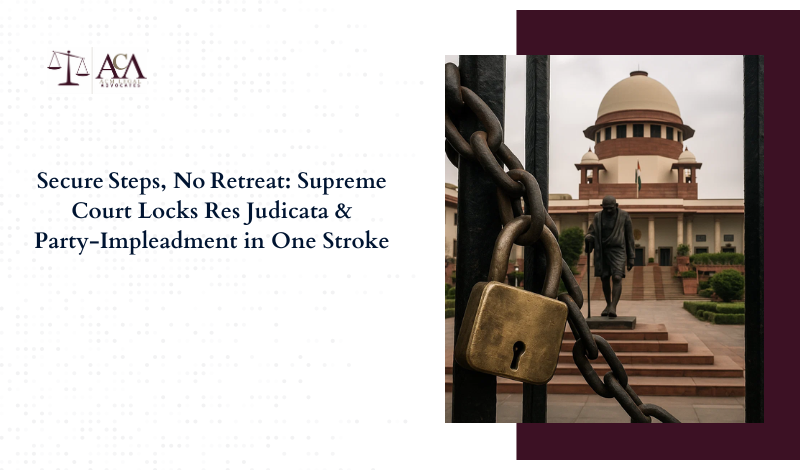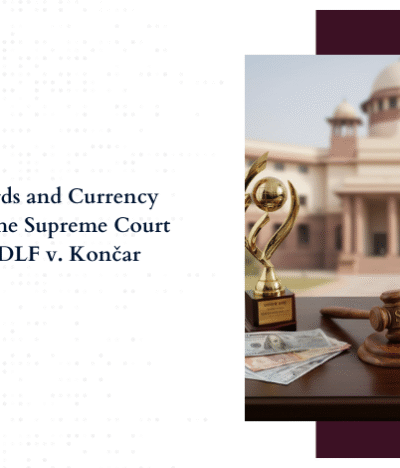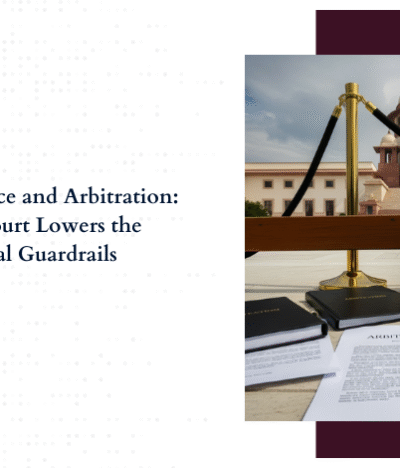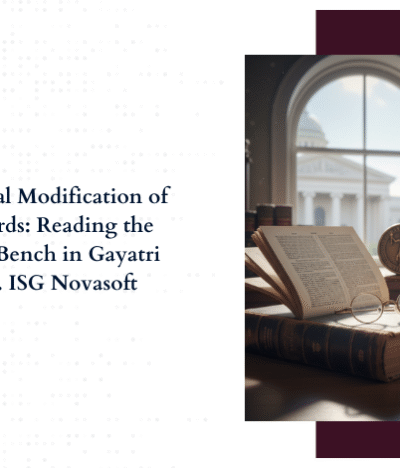The Supreme Court’s decision in Sulthan Said Ibrahim v. Prakasan & Ors. (Civil Appeal No. 7108 of 2025) delivers a twin lesson in procedural finality. First, res judicata applies not only between separate suits but also between successive stages of the same proceedings. Second, a legal heir added after an enquiry under Order XXII Rule 4 of the Code of Civil Procedure (CPC) cannot later erase himself from the record by invoking Order I Rule 10. Together, these rulings tighten the screws on dilatory tactics and safeguard the integrity of concluded interlocutory orders.
Background of the Dispute
| Timeline | Procedural Event | Key Take‑away |
| 1996 | Suit for specific performance (O.S. 617/1996) filed by Prakasan against owner Jameela Beevi. | Contract to sell shop‑premises for ₹6 lakh; appellant‑grandson (Sulthan) only a witness then. |
| 1998‑2003 | Ex‑parte decree; restoration; full trial; decree confirmed up to Supreme Court. | Decree attained finality on 13 Aug 2008. |
| 2008 | Jameela Beevi dies pending execution; plaintiff moves Order XXII Rule 4; court, after enquiry, impleads 13 legal heirs, including Sulthan (appellant). | Order not challenged; became final. |
| 2009‑2012 | Legal heirs file Section 28 SRA application to rescind contract—dismissed; revision also dismissed. | Execution still stalled. |
| July 2012 | Sulthan moves I.A. 2348/2012 under Order I Rule 10(2) seeking deletion of his name, alleging (i) not a legal heir under Muslim law, (ii) protected tenant. | First time these pleas surfaced—four years after impleadment. |
| 2013‑2021 | Trial court & Kerala High Court reject deletion request as barred by res judicata and lacking bona fides. | Findings affirmed. |
| 23 May 2025 | Supreme Court dismisses appeal; imposes ₹25,000 costs; directs delivery of possession within two months. | Sets binding precedent |
Procedural Posture
The apex court was asked to decide whether:
- The earlier impleadment order could be re‑opened at the execution stage.
- The appellant‑grandson, claiming tenancy, could resist delivery despite a final decree.
- Res judicata could thwart the fresh application.
The Court answered all three against the appellant, underscoring that finality cannot be hostage to “clever, dilatory manoeuvres.”
Res Judicata Applies to Every Stage of the Same Suit
The Supreme Court reaffirmed that “the principle of res judicata is not confined to separate proceedings alone but equally applies to subsequent stages of the same proceedings”. This principle, the Court held, precludes reopening of issues that were already decided at earlier stages, especially if not appealed or challenged when made.
Citing its own ruling in Y.B. Patil v. Y.L. Patil, (1977) 4 SCC 526, the Court emphasized:
“A decision made at one stage of a suit, if not appealed, operates as res judicata in subsequent stages.”
In the present case, the order dated 23 July 2008 that impleaded Sulthan as legal heir under Order XXII Rule 4 CPC had been passed after due enquiry. No review or challenge had been filed. That silence for over four years amounted to tacit acceptance and was therefore binding.
The apex bench comprising Justice Sanjay Karol and Justice Aravind Kumar highlighted that Order I Rule 10 is not a backdoor to sidestep finality:
“What was decided in the course of Order XXII Rule 4 proceedings cannot be reopened under the garb of Order I Rule 10.”
This is crucial, since Order XXII Rule 4 involves a judicial enquiry on who qualifies as a legal heir. Once that finding is entered after notice, hearing, and non-contestation, it cannot be upset by a simple procedural plea later. Any contrary approach would render court orders “illusory and meaningless,” in the Court’s words.
Impleaded Legal Heir Cannot Later Opt-Out Without Legal Basis
On the merits of the appellant’s claim, the Court also examined his new assertions—(i) that he was not a legal heir, and (ii) that he was a protected tenant.
However, both were already available defences during the 2008 proceedings, and his silence then precluded their revival now. The Court noted that appellant’s father was not alive at the time of Jameela Beevi’s death, making Sulthan a direct legal heir under Mohammedan law, contrary to his claim.
The tenancy plea, meanwhile, was raised without evidence and after four years of silence—which the Court refused to entertain, branding it a “belated and tactical obstruction.”
Justice Karol, writing the judgment, stated emphatically:
“He cannot be allowed to blow hot and cold in the same breath. He was impleaded as a legal heir without protest. He participated in proceedings and sought deletion only when all efforts to defeat execution had failed.”
Thus, the Court held that the execution of a decree cannot be indefinitely delayed by recycled or manufactured objections. Once a person is brought on record with judicial imprimatur, that order is final, conclusive, and binding—subject only to appeal or review, neither of which had been availed.
Supreme Court’s Final Directions & Observations
The apex court dismissed the appeal with unequivocal clarity, terming it an abuse of process aimed at frustrating a long-standing decree. It imposed ₹25,000 costs on the appellant and directed him to:
- Hand over peaceful possession of the suit property within two months from the date of judgment (i.e., by 23 July 2025).
- Desist from any further resistance, warning that no equity remains in his favour.
The Court also commended the perseverance of the decree-holder, noting that he had been waiting nearly three decades to reap the fruits of a valid decree. It held:
“Litigation must have a finality. Endless reopening of concluded issues, that too at the execution stage, would render the rule of law meaningless.”
Conclusion
This judgment reaffirms the paramountcy of finality in civil litigation. By barring second bites at the cherry through procedural loopholes, the Supreme Court has upheld both the dignity of its earlier orders and the efficient functioning of trial courts.
The ruling is a cautionary tale for litigants attempting to re-agitate settled issues, especially under the guise of technical rules. It also places a judicial seal on the importance of the Order XXII Rule 4 enquiry—making clear that once a person is impleaded as a legal heir, he cannot disown that role to stall execution.






